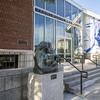Muscarelle Surveys the 50-Year Career of Renowned Sculptor Fred Eversley
- WILLIAMSBURG, Virginia
- /
- September 06, 2017
The Muscarelle Museum of Art proudly announces a landmark exhibition by one of America’s most important sculptors, Fred Eversley: 50 Years an Artist, Light & Space & Energy. Fred Eversley (born 1941) was among the founding members of the postwar “Light and Space” movement in Los Angeles in the 1960s and went on to achieve international renown.
The exhibition, which comprises twenty-three sculptures ranging in date from 1970 to 2004, marks the fiftieth anniversary of Eversley’s distinguished career and is the most comprehensive survey of his work ever presented in an East Coast museum (on view September 1 until December 10, 2017).
From Botticelli to Eversley at the Muscarelle To host the Eversley show, the upstairs galleries where Botticelli and the Renaissance held court last spring have been transformed from opulence to evanescence. Cast in polyester resin spun in a high-speed centrifuge, Eversley’s sculptures are laboriously hand-polished until they attain a clarity and reflectivity far surpassing glass. From the beginning, and still today at a tireless seventy-six, the artist’s driving goal has been to involve the viewer in the energy of light and sound. The concave surfaces of his deeply tinted “lenses” (2 feet in diameter) and “risings” (like luminous spires) use the geometry of the parabola to produce inverted images and reflections that spring into motion as the spectators looks, walk around and change their point of view. Regarding his working process, Eversley says, “You have an idea, you work like crazy, mostly in the dark, but you can’t really get a feeling for the piece until you go through about 15 stages of sanding and polishing. When you clean it up and stand it in the gallery, it either works or it doesn’t. If it has a flaw, you can sometimes deal with that. Usually you can’t. And even if you’ve put in a couple hundred hours, you reject it and just walk away.”
Developed by Muscarelle Curator John T. Spike in close conversation with the artist, Fred Eversley: 50 Years an Artist, Light & Space & Energy combines for the first time a sizable selection of sculptures (8) from Eversley’s studio in New York City and an even larger group of works (12) that he keeps in Los Angeles. Late in 2016, the L.A. works were presented in the critically acclaimed exhibition, Fred Eversley: Black, White, Gray, curated by Kim Conaty for Art + Practice, Mark Bradford’s art center in Los Angeles. When Black, White, Gray moved on to the Rose Art Museum at Brandeis University, Eversley invited the Muscarelle to bring the show to Virginia.
“Knowing and admiring Fred Eversley for a long time, we jumped at the opportunity to double the show with works he kept in his New York studio and additional loans from the Virginia Museum of Art in Richmond as well as a remarkable work on loan to the Georgia Museum of Art in Athens,” said Spike.
Fred Eversley: 50 Years an Artist, Light & Space & Energy is an important event in the year-long commemoration Building on the Legacy of the fiftieth anniversary of the arrival of African American students in residence at the College of William & Mary in Williamsburg, Va. Eversley’s sculpture was previously shown at the Muscarelle Museum in 2012, as part of African American Art: Harlem Renaissance, Civil Rights Era, and Beyond, a major exhibition organized by the Smithsonian American Art Museum. Early Days in Los Angeles In 1967, Fred Eversley, age twenty-six, left his flourishing career as the youngest engineer employed on projects for the Air Force and for the Gemini and Apollo missions of NASA Houston in order to become a full-time artist.
Eversley was brought out to Los Angeles in 1963 by Wyle Labs, the most important aerospace testing company in America. He settled in Venice Beach, attracted by its vitality, sea and sky; it also was the only L.A. beach community that would rent to blacks. Venice Beach was a California crossroads of artists and creative people. He soon met Robert Irwin, James Turrell, Larry Bell, John McCracken and other founders of the loosely grouped movement known variously as “Finish Fetish” and “Light and Space”. These innovative artists were exploring new visual concepts, materials and technologies for creating their works. Eversley, the whiz kid engineer, sometimes helped these artists with technical advice, and then in 1967, he joined them. Soon he was spin casting multi-layer plastic pipes that he then cut into geometric shapes. A collector passed by and bought one: This first sale – 50 years ago – meant Eversley was an artist. Three years later he had his first solo exhibition at the Whitney Museum of American Art in New York City.
Fred Eversley was born in Brooklyn, New York, in 1941. His father was an aircraft engineering executive for Republic Aviation. Eversley initially followed that path, attending Brooklyn Technical High school and then Carnegie Institute of Technology (now Carnegie Mellon University), where he received a degree in electrical engineering. Postponing an opportunity to pursue medicine and bio-medical engineering, Eversley first came to Southern California with the intention of temporarily entering the aerospace industry, and was employed at Wyle Laboratories, as a senior project engineer.
Fred Eversley’s work has been featured in more than 200 exhibitions around the world. His art is in the permanent collection of 35 museums and he has executed 15 large public artwork commissions in San Francisco, Washington, D.C., Miami and elsewhere. He was appointed Artist-in-Residence at the Smithsonian Institute in 1977, and for three years, he had a studio at the National Air and Space Museum. Eversley was nominated to the 2001 International Biennial of Contemporary Art in Florence, Italy, where he was awarded the first place Lorenzo il Magnifico Prize for Sculpture. A major interview with Eversley appears in the current, August 2017 issue of C magazine, published by the Crystal Bridges Museum of American Art.
Among upcoming events, Howard University will bestow a Lifetime Achievement Award on Eversley in April 2018. Eversley has lived and worked in Venice Beach, California, since 1963, while maintaining a studio in his native New York City, since 1980. His deep family roots in Virginia make this retrospective exhibition a kind of homecoming. His mother, Beatrice Syphax Eversley, aged 101 this year, is the oldest living member of the historic Syphax family of Arlington, who were slaves at Mount Vernon and then at Arlington House. In 1826, George Washington Parke Custis, the grandson of Martha Washington (and step-grandson of the first president) recognized Maria Carter Syphax as his daughter, by giving her and her children freedom and a seventeen-acre tract of land inside the Arlington plantation. Since that date, the Syphax family has been distinguished for its civic service to education, medicine and administration in Virginia, Washington, D.C. and New York.





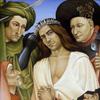

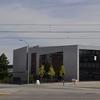
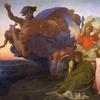

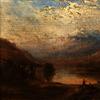
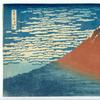
100x100_c.jpg)
